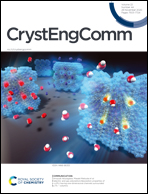Rational structural design of ZnOHF nanotube-assembled microsphere adsorbents for high-efficient Pb2+ removal†
Abstract
Adsorbents with high effective adsorption capabilities have attracted extensive interest and are promising for the removal of heavy metal ions from wastewater. Herein, we prepared well-dispersed ZnOHF microspheres with efficient adsorptive removal toward Pb2+ in an aqueous environment via an amino acid assisted hydrothermal method. The obtained microspheres were self-assembled by numerous nanotubes with an outer diameter of ∼10 nm and a wall thickness of about 3.5 nm. By taking advantage of the large specific surface areas of nanotube-assembled microspheres (271.06 m2 g−1), the maximum adsorption capacity for Pb2+ was up to 285.7 mg g−1 in solution. Further analysis revealed the key role of the geometry structure of fine nanotube-assembled microspheres in boosting their adsorption ability. Furthermore, we proposed a potential growth mechanism of the as-prepared microspheres. The thermodynamic study of Pb2+ adsorbed on nanotube-assembled ZnOHF microspheres suggests that it is an endothermic and spontaneous process. This finding may open a new avenue to design efficient sorbents with high surface areas and effective heavy metal or organic dye removal ability in solution.



 Please wait while we load your content...
Please wait while we load your content...